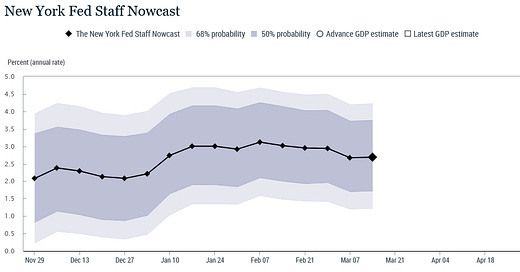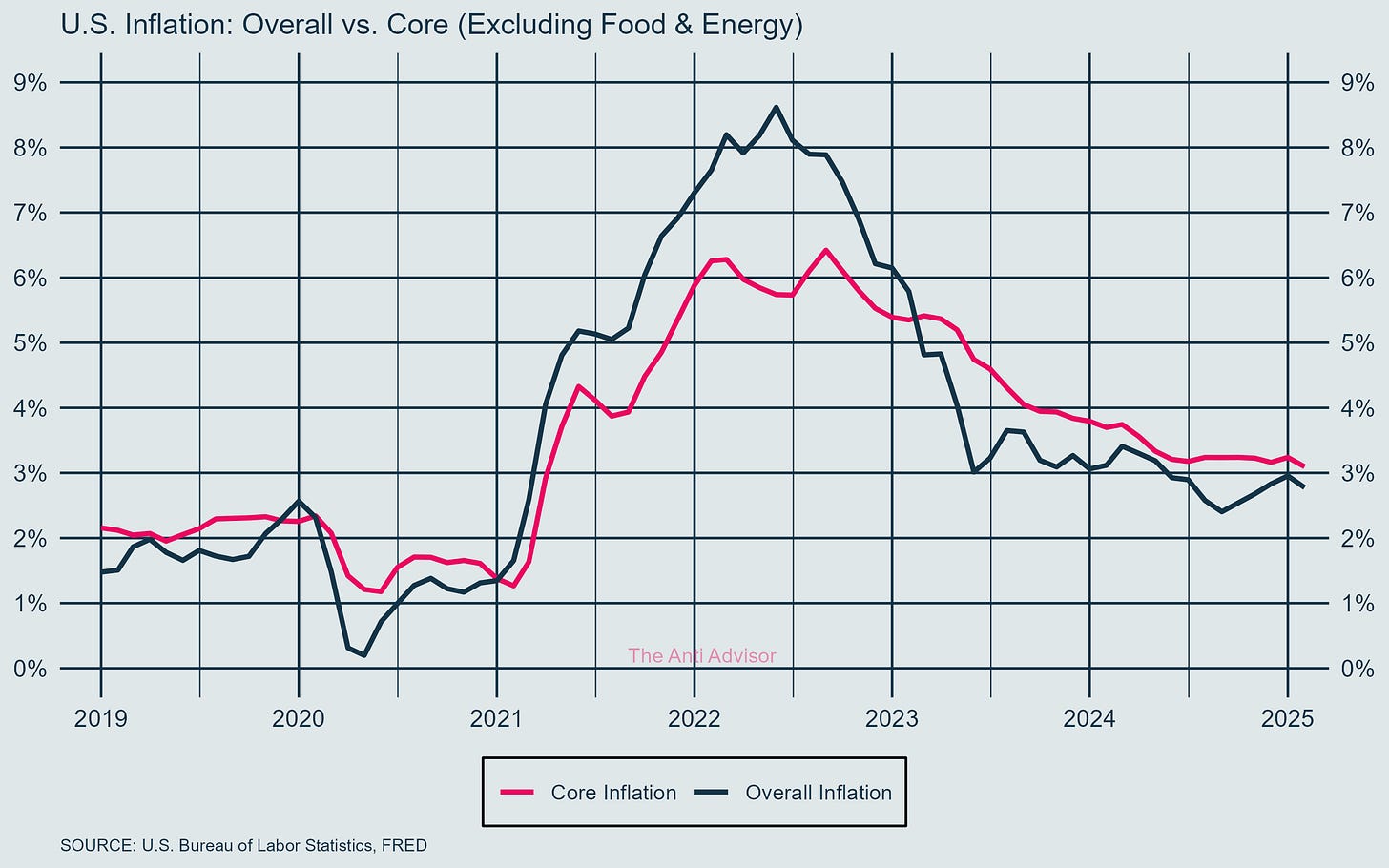Spring’s kicking off, but the economy’s sending some mixed signals worth unpacking.
Unemployment’s edged up to 4.1%, a tick higher than January’s 4.0%, hinting at a labor market that’s cooling a bit more than expected.
Inflation’s taken a breather—down from 3.0% in January to something closer to 2.8%, with core inflation easing too, giving folks a bit of relief after years of price pressure.
Cash and loans are still easy to come by albeit at higher rates, which are in the hot seat, and Jerome Powell’s got a rate decision coming Wednesday. Add in some government layoffs from the Department of Government Efficiency (DOGE) and it’s clear the economy’s got some wobbles to watch.
The numbers are starting to feel more like a roller-coaster than a smooth ride. That housing strain we discussed last week? Still there, with affordability stretched and inventory piling up. Inflation’s dip is a win, but the job market’s softening raises an eyebrow—resilience is starting to feel shaky.
And then there’s this curve-ball from the Atlanta Fed that’s got everyone scratching their heads.
Their GDPNow model’s suddenly flipped to forecasting a -2.4% contraction for Q1 as of March 6, down from -2.8% earlier this month. Just a few weeks ago, they were all sunshine and rainbows at +3.9%. What gives? It’s like they woke up one day and decided the economy’s tanking.
How this negative GDP call came out of nowhere is the real question. Back in late February, the Atlanta Fed was still pegging Q1 growth at over 2%, in line with everyone else. Then by March 3, they’re at -2.8%, blaming weak consumer spending and a ballooning trade deficit. Now it’s eased to -2.4%, but still, this flip-flop’s got folks buzzing.
Most think it is tariffs spooking the data, DOGE cuts hitting harder than expected, or are they just seeing ghosts in the numbers?
Let’s dive into what’s this is all about as March unfolds.
Is the Atlanta Fed Fudging the GDPNow Numbers?
The Atlanta Fed says their GDPNow model is a pure, no-tinkering snapshot of where GDP’s headed—13 subcomponents like consumer spending and trade, crunched from public data by the Census Bureau and BLS, bridged to GDP with fancy equations.




